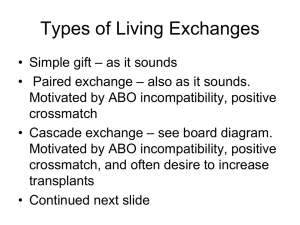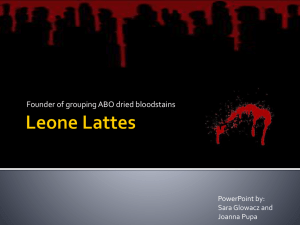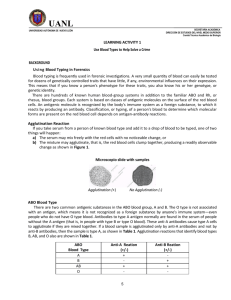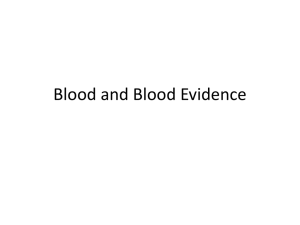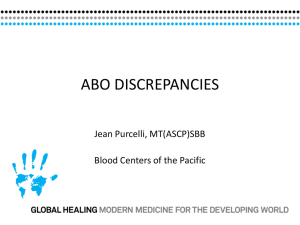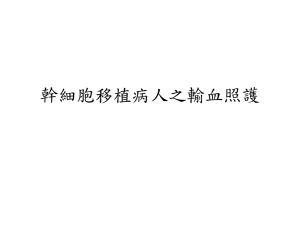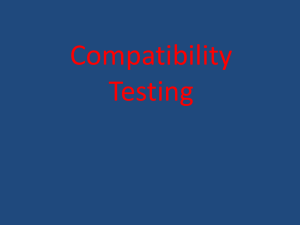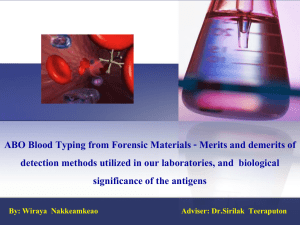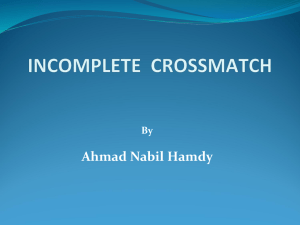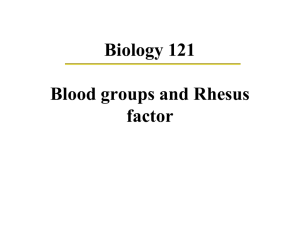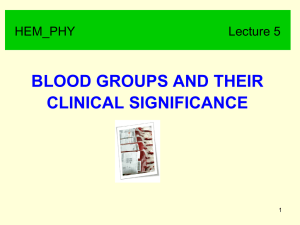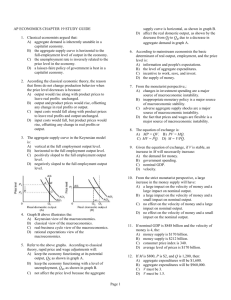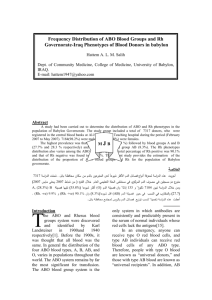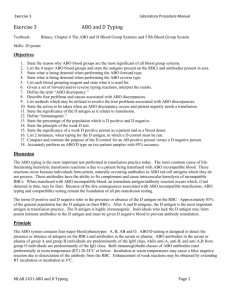ABO & Rh(D) Blood Groups - The Naked Science Society
advertisement
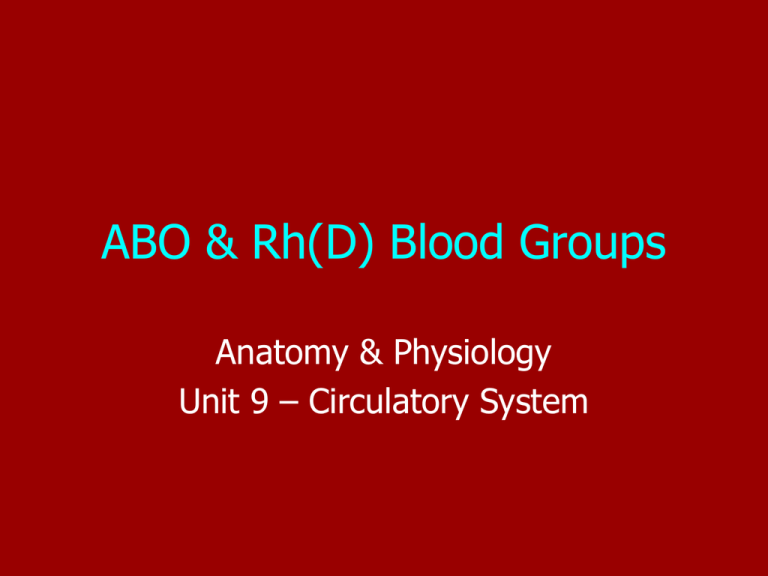
ABO & Rh(D) Blood Groups Anatomy & Physiology Unit 9 – Circulatory System The ABO System • Discovered in 1901 by Dr. Karl Landsteiner • 4 Main Phenotypes (A, B, AB, O) • ABO gene located on long arm of chromosome 9 ABO & Rh(D) 2 The ABO Antigens • Added to Proteins or Lipids in Red Cells • Substrate Molecule is H (fucose) • A antigen is N-acetyl-galactosamine (GalNAc) • B antigen is Galactose (Gal) • A and B genes code for transferase enzymes ABO & Rh(D) 3 ABO Antibodies • • • • • • A and B substances very common Antibodies produced to “non-self” Produced after first few months of life A & B people have mainly IgM O people have IgG May fade in old age ABO & Rh(D) 4 Antigens & Antibodies Blood Group Antigens on RBCs Antibodies in Serum Genotypes A A Anti-B AA or AO B B Anti-A BB or BO AB A and B Neither AB O Neither Anti-A and anti-B OO ABO & Rh(D) 5 Inheritance of ABO Groups Allele from the mother Allele from the father Genotype of offspring Blood types of offspring A A AA A A B AB AB A O AO A B A AB AB B B BB B B O BO B O O OO O ABO & Rh(D) 6 ABO Typing • Cell Group • Reverse Group – Test plasma/serum with: – Known A1 cells – Known B cells – Known O cells – ? Known A2 cells – Test Washed Cells With: – Monoclonal Anti-A – Monoclonal Anti-B – Inert control • Agglutination is a positive result • Reactions may be weaker than cell group ABO & Rh(D) 7 Distribution of ABO Groups Population Aborigines Basques Blackfoot (N. Am. Indian) Bororo Chinese-Canton Chinese-Peking English Hawaiians Irish Mayas Navajo (N. Am. Indian) Peru (Indians) United Kingdom (GB) USA (blacks) USA (whites) ABO & Rh(D) O A B AB 61 51 17 100 46 29 47 37 52 98 73 100 47 49 45 39 44 82 0 23 27 42 61 35 1 27 0 42 27 40 0 4 0 0 25 32 8 2 10 1 0 0 8 20 11 0 1 1 0 6 13 3 1 3 1 0 0 3 4 4 8 Distribution of the A allele ABO & Rh(D) 9 Distribution of the B Allele ABO & Rh(D) 10 Distribution of the O Allele ABO & Rh(D) 11 Significance of ABO Group • ABO mismatched transfusions: – – – – – Rare May be life threatening Can be caused by technical or clerical error Intravascular haemolysis More severe in group O patients ABO & Rh(D) 12 Universal Donor and Recipient • Universal Donor • Group O • Universal Recipient • Group AB – Carries no A or B antigens – Packed and processed units have little antibody – Patient has no anti-A or anti-B present – Cannot lyse any transfused cells – Beware: other – antibodies may be present Using the patient’s own group ASAP will conserve resources ABO & Rh(D) 13 The Rh(D) Antigen • RH is the most complex system, with over 45 antigens • Discovered in 1940 after work on Rhesus monkeys • Subsequently discovered to be unrelated to monkeys • RH gene located on short arm of chromosome 1 ABO & Rh(D) 14 Simple Genetics of Rh(D) • 86% of caucasians are Rh(D) pos • The antithetical antigen d has not been found • The d gene is recessive: – Dd, dD, DD, persons are Rh(D) pos – Only dd persons are Rh(D) neg ABO & Rh(D) 15 Distribution of Rh(D) Types Population Rh(D) pos Rh(D) neg Caucasian 86% 14% AfricanAmerican 95% 5% Oriental >99% <1% ABO & Rh(D) 16 Significance of Rh(D) • 80% of Rh(D) neg persons exposed to Rh(D) pos blood will develop anti-D • Anti-D can also be stimulated by pregnancy with an Rh(D) positive baby – Sensitisation can be prevented by the use of anti-D immunoglobulin, antenatally and post natally • Rh(D) neg females of childbearing potential should never be given Rh(D) positive blood products ABO & Rh(D) 17 Inheritance • ABO & RH genes are not linked • ABO & Rh(D) type are inherited independently For example: An A Rh(D) pos mother and a B Rh(D) pos father could have an O Rh(D) neg child ABO & Rh(D) 18 Inheritance of ABO and Rh(D) Mother Father Group A AO Group B BO Rh(D) pos Dd Rh(D) pos Dd Group A AO Group B BO Group O OO Rh(D) pos Dd Rh(D) pos Dd Rh(D) neg dd ABO & Rh(D) 19
